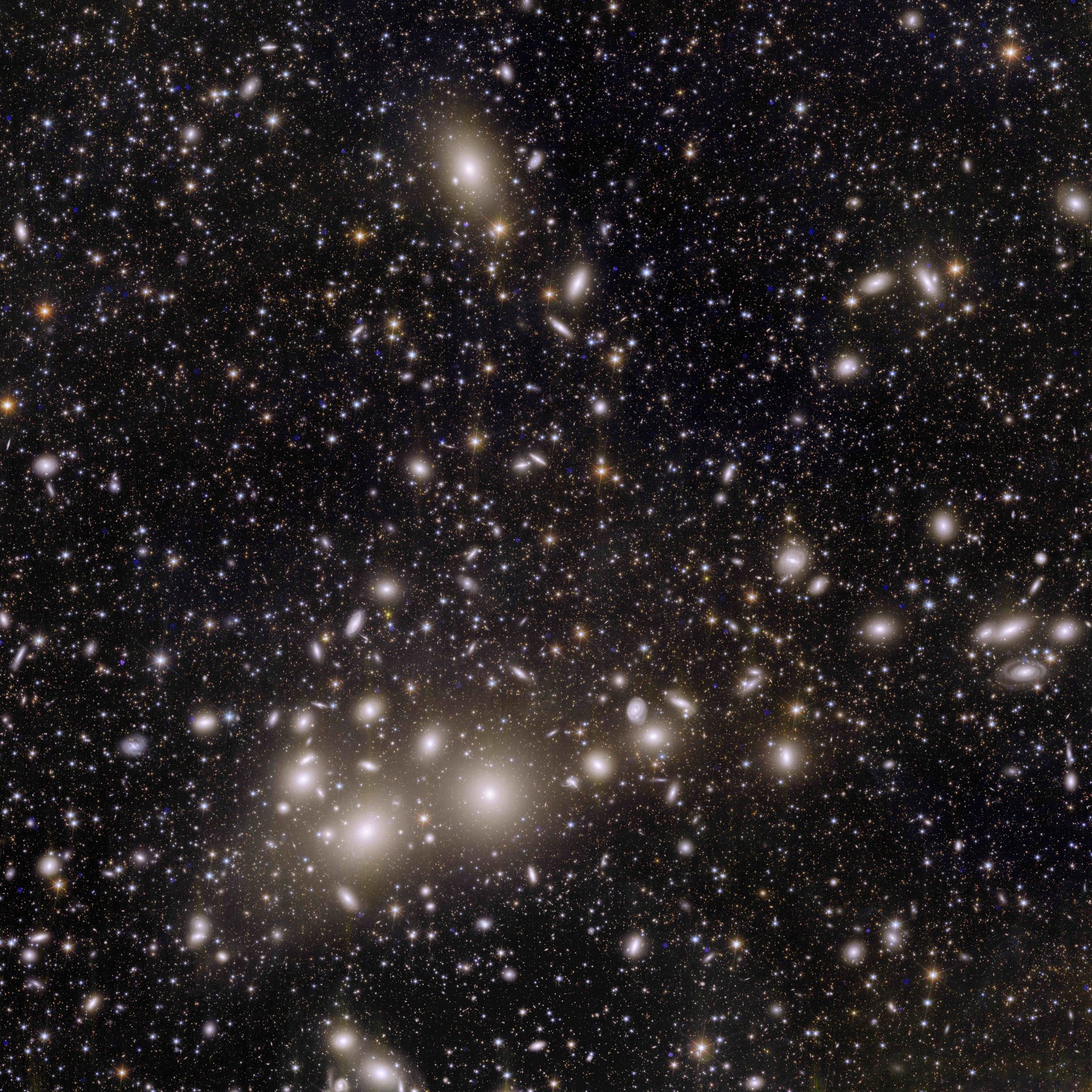Science
Astronomers Unveil New Method to Detect Dark Matter Through Galaxies

Researchers at the University of Copenhagen have proposed a novel approach to detect dark matter by observing distant galaxies. The study focuses on the elusive particle known as the axion, which is believed to play a crucial role in the composition of the universe. This theoretical matter constitutes approximately **80%** of the universe’s mass, primarily existing as halos surrounding galaxies and clusters. Despite extensive searches over the past six decades, scientists have yet to identify the particle responsible for dark matter.
The team, led by Associate Professor Oleg Ruchayskiy, has devised a method that uses the properties of Active Galactic Nuclei (AGN). These are incredibly bright regions at the centers of galaxies, powered by supermassive black holes (SMBH). The researchers suggest that AGNs can act as natural particle accelerators, enabling the potential detection of axions through the electromagnetic radiation emitted as light passes through the magnetic fields of galaxy clusters.
Innovative Approach to Dark Matter Detection
The search for dark matter particles typically relies on high-energy particle accelerators, such as the Large Hadron Collider at CERN in Geneva, Switzerland. These facilities are expensive and require significant time to construct. In contrast, the Copenhagen team proposes leveraging the universe’s existing phenomena, including neutron stars, black holes, and now AGNs, as alternatives for particle acceleration.
In their recent publication, titled “Constraints on axion-like particles from active galactic nuclei seen through galaxy clusters“, featured in Nature Astronomy, Ruchayskiy and his collaborators detail their observations of **32** SMBHs in distant galaxies. These galaxies were made visible through the gravitational lensing effects of galaxy clusters situated in the foreground. The data collected suggested a pattern resembling the signature of axion-like particles (ALPs).
The findings indicated the presence of gamma rays, which, according to theoretical models, would be released during axion production. While this does not serve as definitive proof of axions, it significantly narrows down the search for dark matter particles.
Future Research and Implications
Postdoctoral researcher Lidiia Zadorozhna, a leading author of the study and a Marie Curie fellow at the Niels Bohr Institute, emphasized the implications of their findings. She noted that the research not only advances the quest for axions but also opens avenues for further exploration of other forms of radiation, such as X-rays.
In a press release from the University of Copenhagen, Ruchayskiy remarked on the importance of this research, stating, “The combined data indicated the presence of gamma rays, which would, in theory, be released by the production of axions.” This innovative approach may represent a significant step forward in understanding dark matter and the fundamental composition of the universe.
As scientists continue to explore the cosmos, the collaboration between astrophysics and particle physics may yield new insights into one of the universe’s greatest mysteries. The ongoing search for dark matter remains critical, with each new method bringing researchers closer to uncovering the nature of this invisible mass.
-

 Technology5 months ago
Technology5 months agoDiscover the Top 10 Calorie Counting Apps of 2025
-

 Technology3 weeks ago
Technology3 weeks agoOpenAI to Implement Age Verification for ChatGPT by December 2025
-

 Health3 months ago
Health3 months agoBella Hadid Shares Health Update After Treatment for Lyme Disease
-

 Health3 months ago
Health3 months agoAnalysts Project Stronger Growth for Apple’s iPhone 17 Lineup
-

 Health4 months ago
Health4 months agoErin Bates Shares Recovery Update Following Sepsis Complications
-

 Technology5 months ago
Technology5 months agoDiscover How to Reverse Image Search Using ChatGPT Effortlessly
-

 Technology3 months ago
Technology3 months agoElectric Moto Influencer Surronster Arrested in Tijuana
-

 Technology5 months ago
Technology5 months agoMeta Initiates $60B AI Data Center Expansion, Starting in Ohio
-

 Technology2 months ago
Technology2 months agoDiscover 2025’s Top GPUs for Exceptional 4K Gaming Performance
-

 Technology5 months ago
Technology5 months agoRecovering a Suspended TikTok Account: A Step-by-Step Guide
-

 Health5 months ago
Health5 months agoTested: Rab Firewall Mountain Jacket Survives Harsh Conditions
-

 Lifestyle5 months ago
Lifestyle5 months agoBelton Family Reunites After Daughter Survives Hill Country Floods











